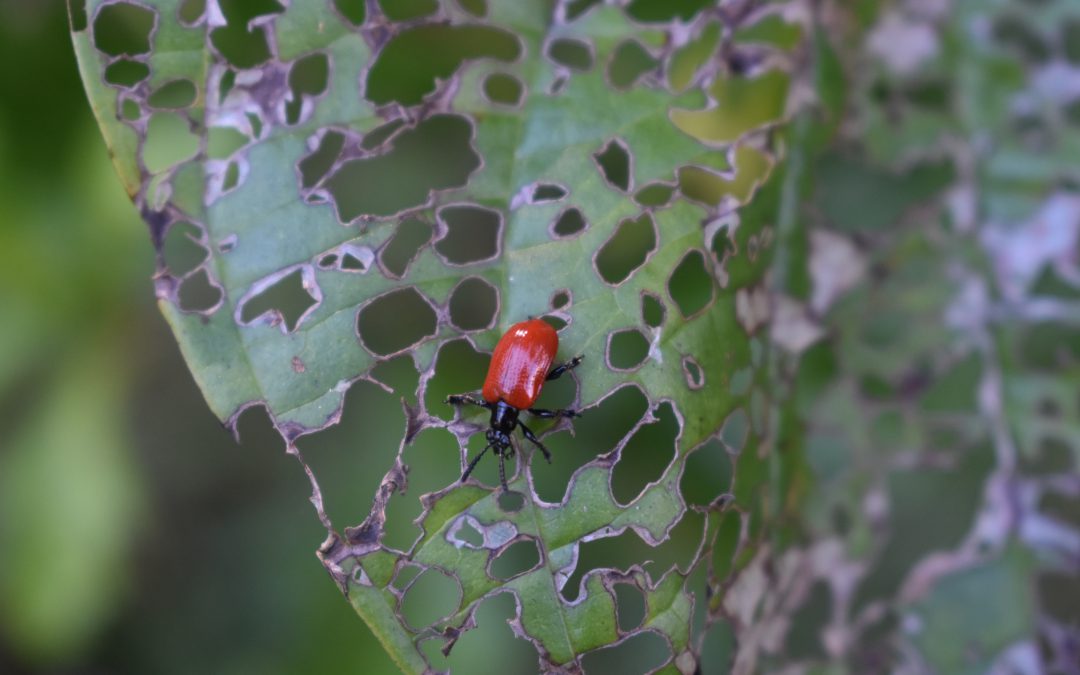
by Danielle S. Williams | Feb 3, 2022

Air Potato Leaf Beetle
I’m sure many of you could easily recognize air potato with its winding vines and heart-shaped leaves climbing high along roadsides, fencerows and natural vegetation, but could you recognize its key predator, the air potato leaf beetle? Believe it or not, a small, red leaf-feeding beetle was introduced and is here to help control the invasive air potato vine!
The Issue with Air Potato Vine
Air potato (Dioscorea bulbifera) is a plant species that is native to Asia and was first introduced to the United States as a landscape plant but has now become one of Florida’s most problematic invasive plants. Air potato has spread to 60 of the 67 counties in Florida, including many in the Panhandle. Air potato vines can grow up to 8 inches per day! The dense vines smother vegetation and displace native plants, trees and animals. The air potato vine is on the Florida Noxious Weed List. This means that is illegal to plant, propagate or move the air potato unless you have a permit.
The air potato vine spreads by vegetative reproduction. This is through the formation of aerial tubers, or bulbils that are formed in the leaf axils. The aerial tubers are roundish and vary in size. In addition to aerial tubers, air potato also produces underground tubers, making control that much more difficult. During the winter, the aerial tubers will drop to the ground and give rise to new vines in the spring.
Park managers and homeowners throughout Florida have battled with the air potato as its covered our landscape. For years, the primary means of control were by manually pulling, digging and destroying the tubers or by herbicide applications, until recently.
Classical Biological Control of the Air Potato Vine
Another method for controlling invasive plants is with classical biological control. This method involves searching for insects that feed exclusively on a plant in its native range and releasing them in an area that has been invaded by the plant. Scientists with the United States Department of Agriculture discovered the air potato leaf beetle (Lilioceris cheni) that feeds on air potato in its native range of Asia. After extensive testing, scientist found that the beetle is species-specific and poses no risk to other plant species.
In 2012, air potato leaf beetles were first released in Florida to help battle the air potato. Now, according to the Florida Department of Agriculture and Consumer Services (FDACS), they are officially established in the state! This means, they are here to stay and research has shown they are helping!
While you likely won’t see the beetles now, because they are overwintering (a period of suspended development), look for them in the spring! Adults are bright red with a black head and legs and about the size of your pinky fingernail. The females lay white, pale eggs on the underside of leaves. The egg-laying process causes the leaves to curl and cup. In addition to that, larvae feed on the leaves skeletonizing them. This feeding by the beetle negatively affects the growth and reproduction of the plant.
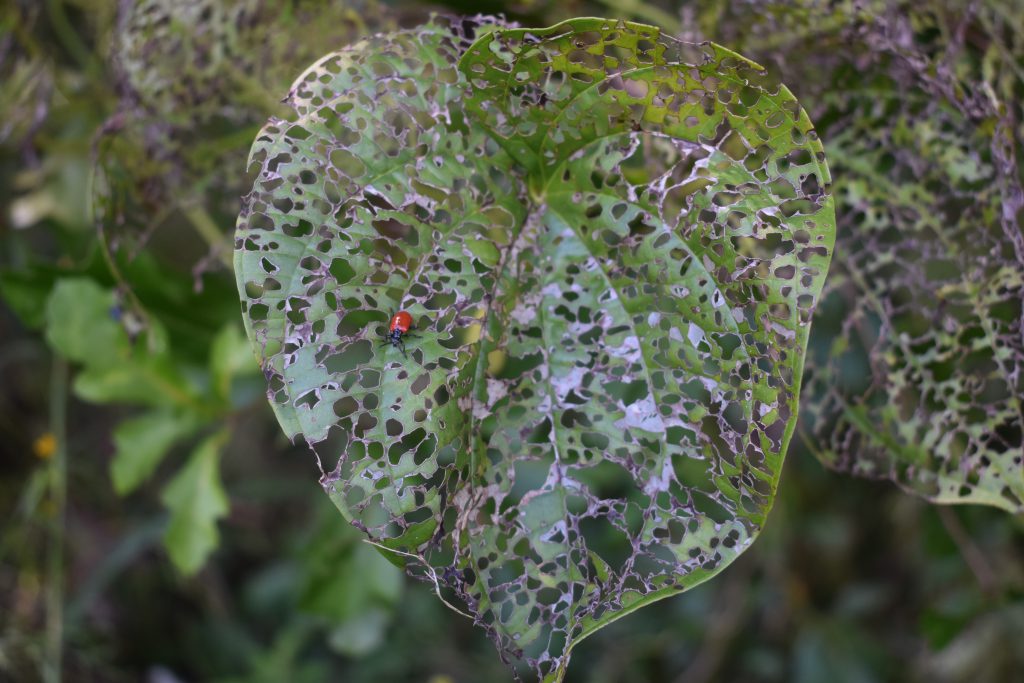
Skeletonized leaf damage to Air Potato from the Air Potato Leaf Beetle. Photo: Danielle Sprague
For more information on air potato leaf beetles, please visit:
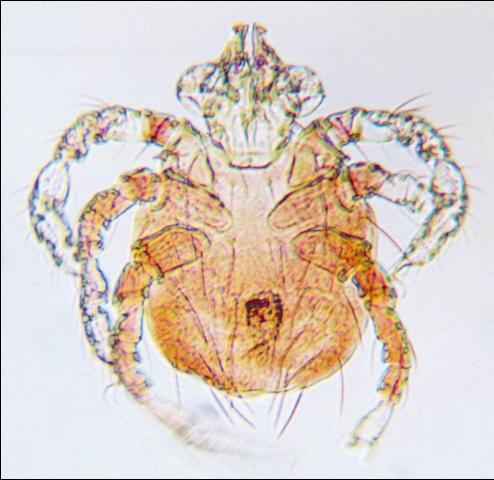
by Danielle S. Williams | Feb 12, 2021
Chiggers, also known as ‘red bugs’ are the larvae of mites in the family Trombiculidae. If you’ve ever got an infestation after being in the woods, you’re familiar with the intense itching and reddish welts they cause. In some parts of the world, they are able to transmit scrub typhus, but luckily for us in Florida, they aren’t known to transmit human diseases.

Microscope view of a chigger. Credit: UF/IFAS.
The life cycle of chiggers consist of an egg, prelarva, larva, nymph and adult. The female will lay her eggs in a sheltered area and the egg will hatch into the prelarva. This is a non-feeding stage. The larva stage is the parasitic stage that feeds on animals and humans, although humans are not their preferred host. During this life cycle stage, they will feed on anything from small mammals to birds, reptiles, and amphibians. You’ll find chiggers in damp, low areas where brush is heavy.
Chiggers use their piercing sucking mouthparts to suck fluids from the skin. After three days of feeding, the larva drops to the ground and transforms into the nymphal stage. The nymph and adult stage have eight legs. The entire life cycle can require two months to one year, depending on temperature, moisture and location.
When chiggers feed on humans, they attach themselves to the skin, hair follicles or pores with their piercing sucking mouthparts. When attached, they are generally not noticed for some time and itching from chigger bites is usually not noticed for four to eight hours after they have been attached or removed. While feeding, they inject a fluid into the skin that dissolves tissue. This fluid injection causes the welts to appear which can last up to two weeks. Contrary to popular belief, chiggers do not actually burrow into the skin and the welts do not contain them.
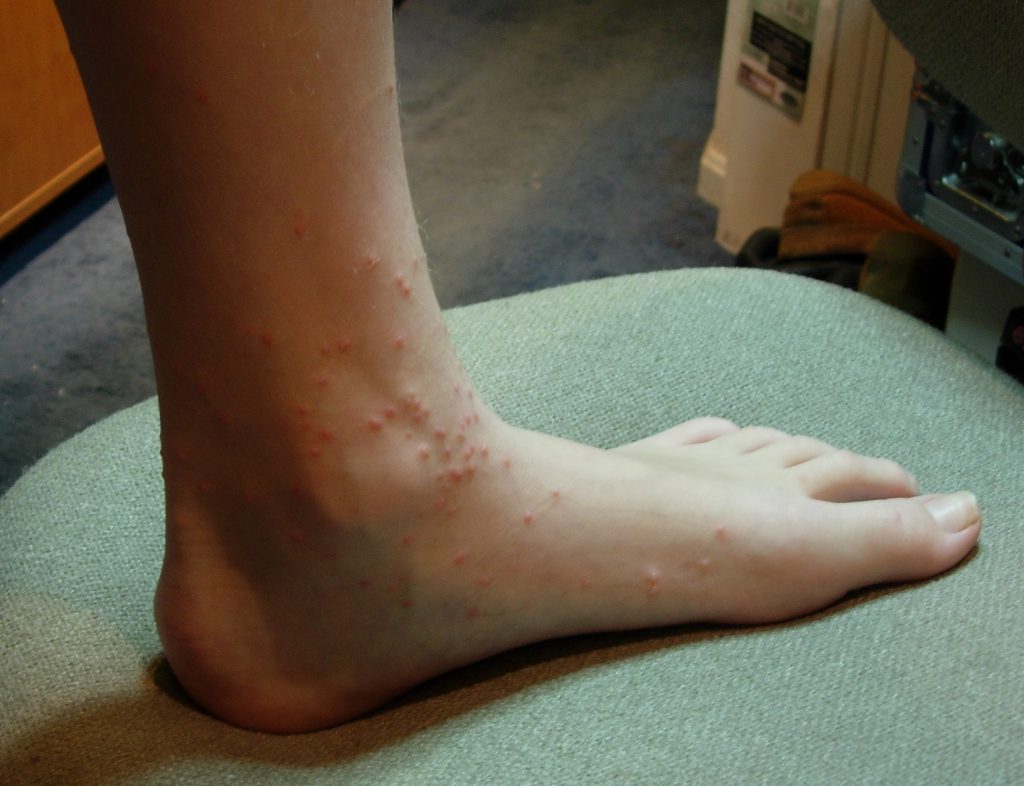
Chigger bites. Photo credit: Wayne Mitzen, UF/IFAS.
Chiggers can be removed from the skin by taking a hot shower or bath and lathering with soap. Since the symptoms of chigger bites do not appear for several hours after a bite, it is not always possible to prevent welts caused by bites. If welts appear, antiseptic should be used. Temporary itching relief may be achieved by using anesthetics available at the drug store.
If you’re going into areas that may be infested with chiggers, wear protective clothing and use repellents containing DEET. Be sure to apply them to the legs, ankles, cuffs, waist, and sleeves of clothing. Be sure to always follow the label. For more information on chiggers, contact your local UF/IFAS Extension Office.
For more information, please visit:
UF/IFAS Chiggers
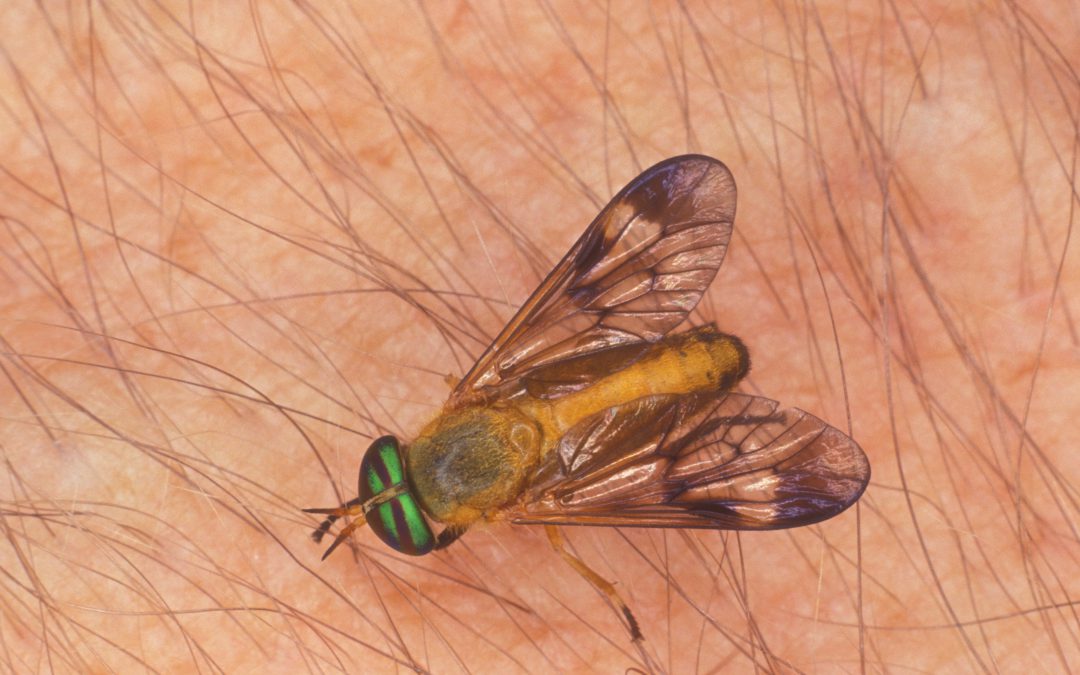
by Danielle S. Williams | Jun 7, 2019
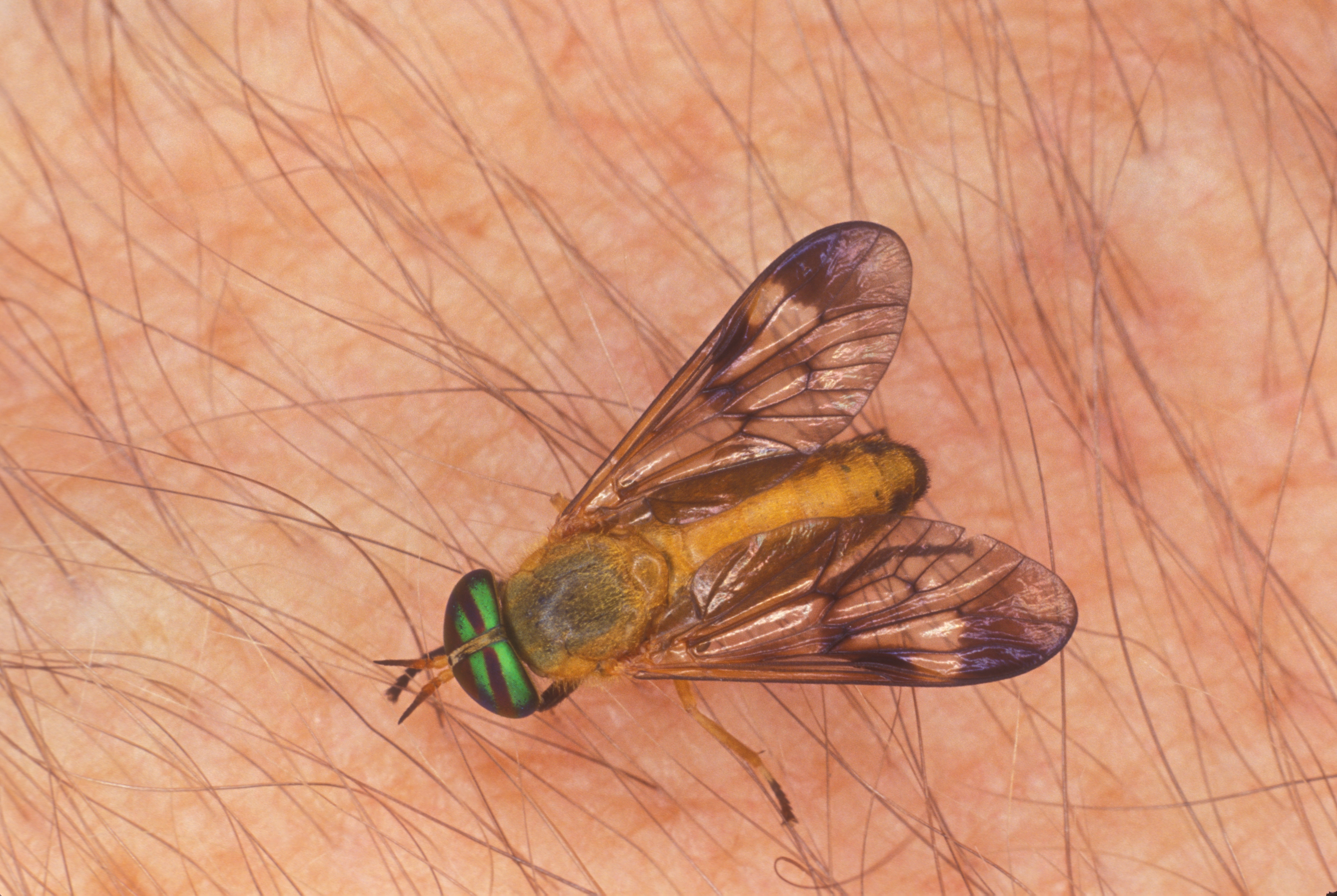
Adult yellow fly. Photo: James Castner
The summer heat is here and with that comes the misfortune of yellow flies, deer flies and horse flies. If you’ve ever experienced their painful bite, you know they can certainly make outdoor work and recreation miserable. These biting flies belong to the insect family Tabanidae and are widely recognized as being economically important pests of humans, cattle and horses. Their populations increase May through September and you’ll find them most active during the daylight hours.
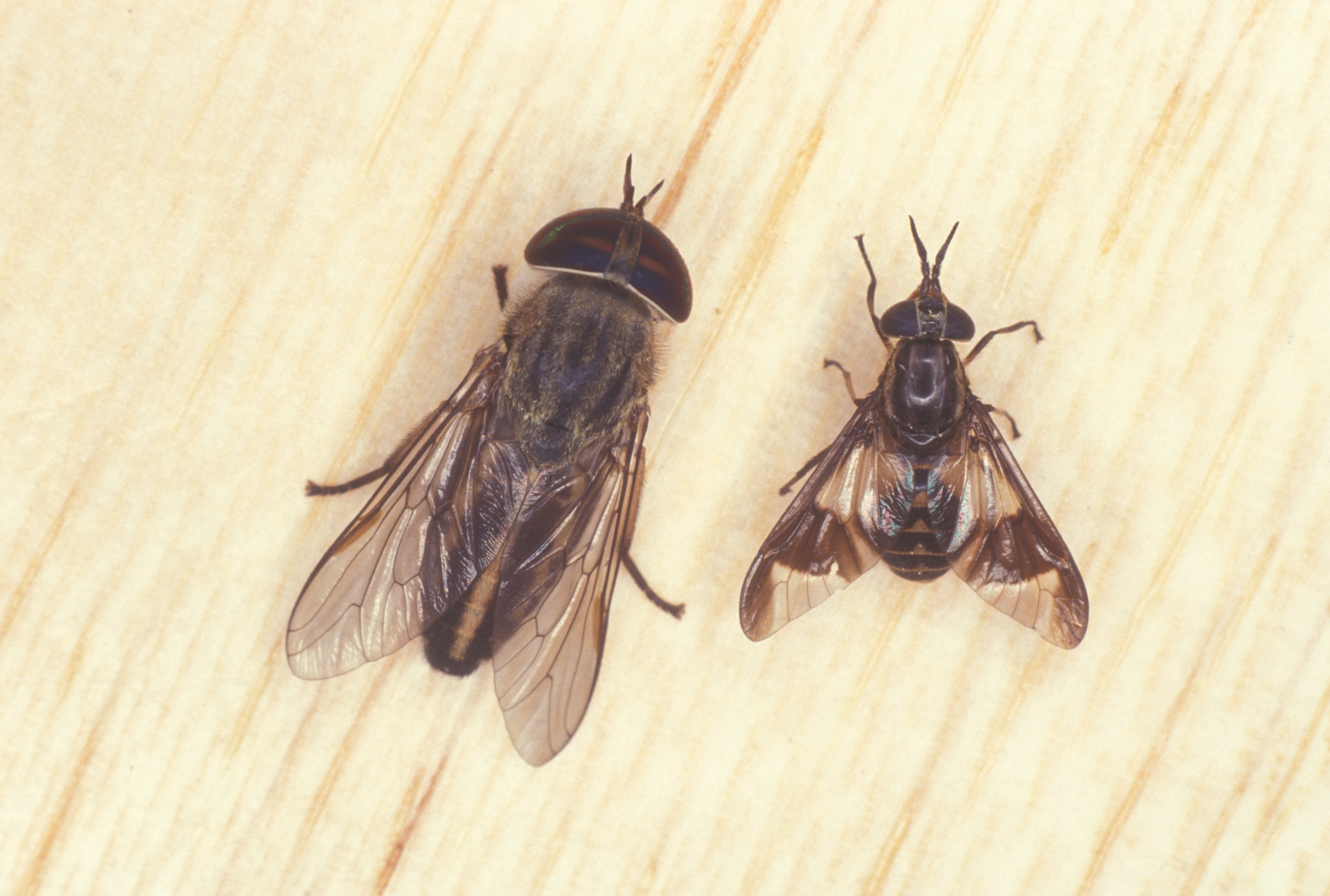
Horse fly (left) and deer fly (right). Photo: James Castner
Yellow flies and deer flies range in length from 1/3″ to 4/10″ and closely resemble each other. Deer flies are yellow to black, have stripes on the abdomen and have dark patches on their wings. Yellow flies have the same body shape, are yellowish but have dark purple-black eyes with florescent green lines. Horse flies are slightly larger, about 4/10″ to 1” with green or black eyes and black to dark brown in color.
Similar to mosquitoes, the female fly is responsible for inflicting a bite. The males feed primarily on pollen and nectar. Females are daytime feeders and use their large scissor-like mouthparts to lacerate skin for a blood meal. During feeding, anticoagulants in the female’s saliva are injected into the skin, which increases blood flow and in some cases can cause allergic reactions.
Standing water and mucky areas, such as ponds and swamps, serve as breeding grounds for most species of biting flies. They have an aquatic or semi-aquatic immature life cycle that requires adequate moisture for development. Females lay eggs in masses on plants, rocks, sticks, vegetation or any other objects found over water. Five to seven days after hatching, the larvae begin to feed on decaying organic matter. The mature larvae migrate to drier soil and develop into pupae. The pupal stage is a non-feeding stage that lasts about two to three weeks and concludes with the emerging adult.
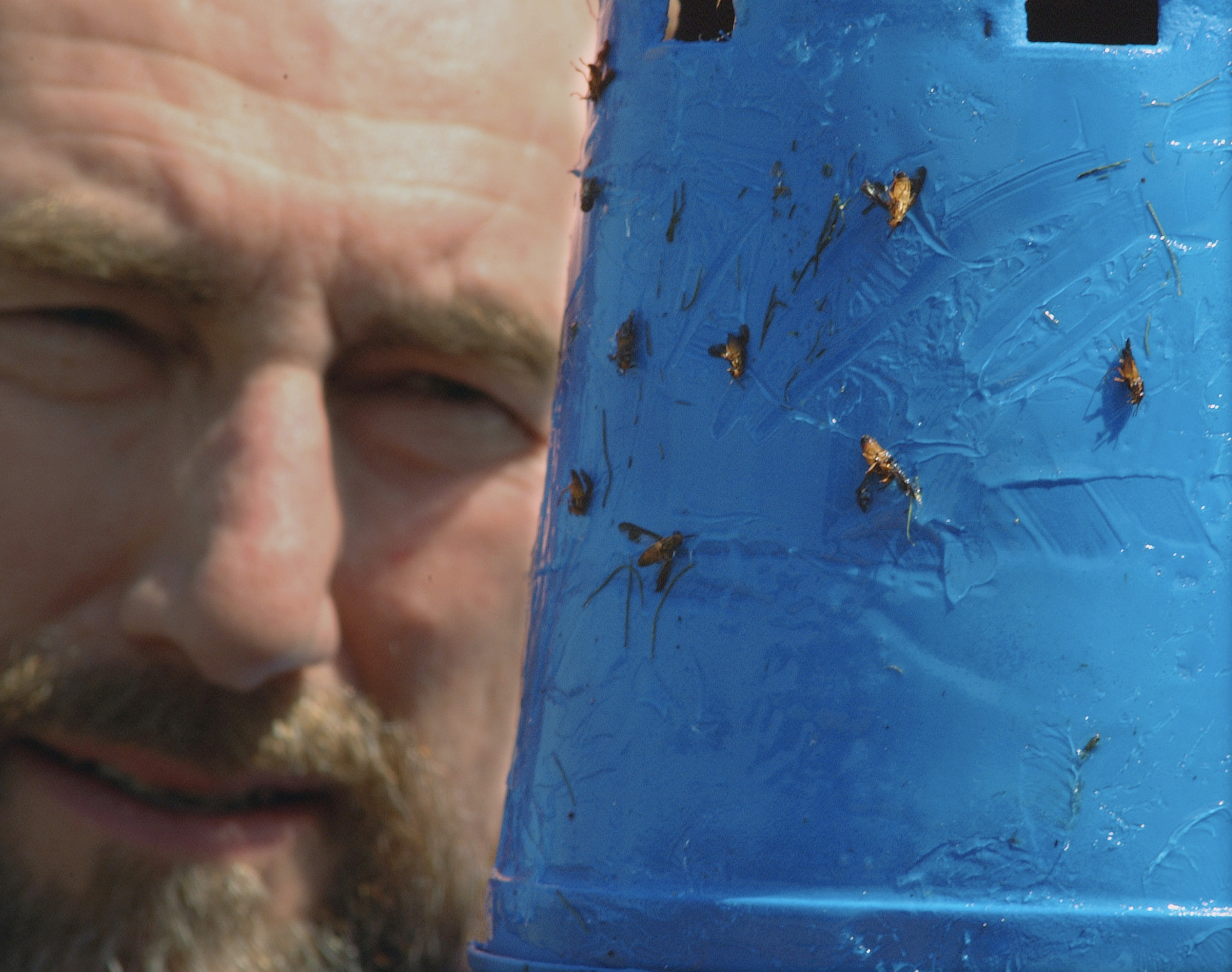
Trolling Deer Fly Trap developed by UF/IFAS Entomologist, Russ Mizell.
Unfortunately, controlling biting flies through source reduction and chemicals is difficult as they develop in natural areas where insecticide applications can be tricky. One method that can be effective in small-scale areas is the use of traps. Adults can be trapped using a big black ball or a blue plastic cup covered in glue. The traps should be hung about three to six feet above the ground and require wind movement for the attraction of flies.
The use of insect repellents can be helpful but not overly effective. A better prevention option is to wear protective clothing to reduce the likelihood of skin exposure to flies.
For more information on this topic, use the links to the following publications:
UF/IFAS Biting Flies
The Trolling Deer Fly Trap
The Yellow Fly Trap









